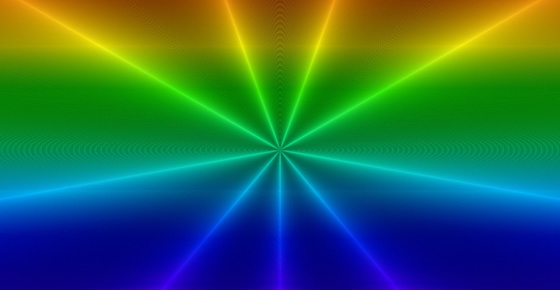
Clinical application
In 1967 was invented laser therapy, which was capable to deliver near infrared light at an intensity strong enough to be effective on the human body. First it was mainly used for wound healing and pain relief but has been since used for many other health issues such as:
- stroke (Lapchak 2010)
- myocardial infarction (Liebert 2017)
- spinal cord injury (Cordeiro da Silva et al 2018)
- immune system support resulting in decreasing inflammation (Hamblin 2017)
- peripheral nerve regeneration (Rosso et al 2018)
- neurodegenerative diseases (Lapchak 2012,Sommer 2012)
- traumatic brain injuries. (Wu 2010)
- Anxiety and depression (Schiffer 2009)
It is important to note that laser doesn’t emit any heat, sound of vibration, but simply acts at a photochemical level of the cell. More recently, the development and commercialization of LEDs (light-emitting diodes) made photobiomodulation devices more affordable. LEDs produce light at a similar wavelength than laser, but are less monochromatic (i.e. they have broader output peaks) and hence have less coherence than a laser. LEDs have the advantage to be much cheaper, causing disagreement amongst laser manufacture companies, who use the argument of lack of coherence of light being a factor of less efficiency, although some studies deny this claim (Heiskanen et al. 2018).
The role of low level light therapy in traumatic brain injury:
As mentioned earlier, using the appropriate parameters (i.e. wavelength) would allow low level light therapy to go through the skull and reach the brain (Wu 2010), where neurons are dense in mitochondria, making them ideal candidates for LLLT. Traumatic brain injuries (TBI) are known to cause shearing forces that will tear at a microscopic level the gray and white matter and cause diffuse axonal injury. Those damages are very prevalent in the frontal lobe and prefrontal cortex, causing mental processing deficits such as
- memory loss
- Attention deficiency
- Difficulty focusing
- Brain fog
- Mental clarity
- Difficulty following instructions
Because of the mechanisms of photobiomodulation described earlier, transcranial LLLT have the capability to significantly improve the recovery of a brain injury (Rojas 2012, Naeser 2009).The Benefits of transcranial low level light therapy include:
- Increased ATP production (Antunes 2004)
- Neurogenesis (brain tissue repair) through BDNF and nerve growth factor production (Pearson-Fuhrhop 2009)
- Increased blood flow and angiogenesis (development of new blood vessels) (Corazza 2007, Karu 2005)
- Reactive oxygen species and oxidative stress regulation (Chen 2011)
- Activation of the immune system (Moreira 2009)
- Decreased inflammation and edema(Bossini 2009)
- Decreased cell excitotoxicity and cell death (Liang 2006)
Application/use:
However, not every infrared light can be used in a therapeutic way and some precautions have to be taken. First it is necessary to use a source of light with low power (usually below 500mW), otherwise it might raise the temperature and cause structural changes in the tissues. The power density (or irradiance, i.e. power applied per surface) is usually between 5mW/cm2 to 5W/cm2. Another important factor is the energy (in Joules) or energy density (in Joules per cm2) applied. Why are all those parameters so important? It is because photobiomodulation is following a “biphasic dose response”, in other words, there is an optimum value of the “dose” of light delivered and it does not follow “the more, the better” type. Too little of light therapy is not efficient enough, and too much light stimuli suppresses the benefits. (Freitas et al 2017). The duration of exposure and the time interval between treatment is also subject to influence the efficiency of LLLT. Several studies have been trying to find the appropriate protocol by varying the treatment from several times a day for a few days to once a week for several weeks, without getting any solid conclusion.
So let’s recapitulate what we have learned so far. First, light is energy in the form of photons particles that can influence the human body in different ways, one being that it can affect us at the cellular and mitochondrial level. Second, the way that it will affect us and the depth of penetration will depend on the wavelength of those particles spread, infrared and near-infrared being the most efficient area of the light spectrum. At that wavelength, light can penetrate through the skull and reach the brain, whose tissues are rich in mitochondria and can hence be highly influenced. It doesn’t seem to make a difference between monochromatic light (laser) and less coherent light (LEDs). The dosage of application is very important and incorrect parameters such as irradiance, energy density or treatment frequency can lead to ineffective treatment. However, if we use the right parameters, photobiomodulation can significantly improve the outcome of people suffering with traumatic brain injuries by positively affecting energy production, blood flow, tissue regeneration and limitation of cell damages.
Conclusion:
Low level light therapy appears to be a solid therapy tool not only for rehabilitation of neurological disorders but also to maintain proper brain health and slow down aging process. Many more tests still have to be conducted in order to reach optimal efficiency, but we’re getting there pretty fast.
